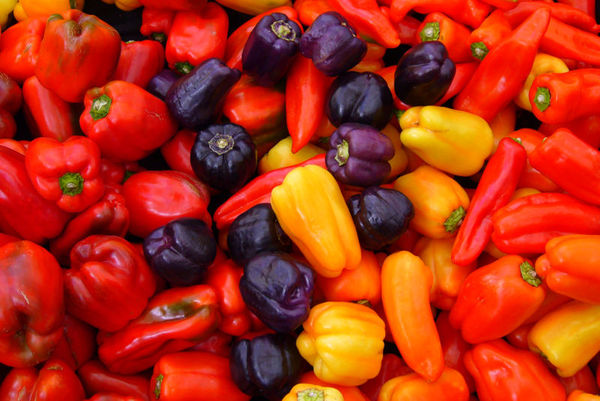
Common Name: Cayenne | Scientific Name: Capsicum Annum

Family Name: Solanaceae
Resources
Fact Sheet
Fact Sheet
Capsicum annuum, C. frutescens
Parts Used: Pods
In A Word: Circulation Stimulation
Reasonable Uses: Poor circulation, cold hands and feet, slow healing wounds, painful joints, arthritis, sciatica, chronic muscle pain, post surgical scar pain.
History and Traditional Uses
The word capsicum, comes from the Greek kopto, meaning “I bite.” Bite into a hot pepper, and you’ll quickly discover how biting this herb can be. The red face and the perspiration that follows chewing on a red pepper was not missed by the ancients who used it both in cuisine and medicine.
First used by Native Americans to improve circulation, American colonials suffering from frostbite did the same. Indeed, the colonials found its circulation stimulating activity had a number of practical uses. Colds cleared, wounds healed, and joints ached less with vibrant circulation brought on by capsicum.
Scientific Back Up
Cayenne contains the alkaloid capsaicin. Considered a powerful circulatory stimulant, capsaicin produces an intense burning sensation when it touches the mouth, eyes, or tender skin followed by a rush of blood to the anointed area. Taken internally the blood vessels in the extremities open up and freely deliver blood to the tissues.
On the pain front, capsaicin works on several levels. Firstly, the burning sensation of hot peppers signals the brain to secrete endorphins, feel-good substances that block pain, induce well-being, and sometimes create euphoria. Capsaicin also block the transmission of pain from nerve endings to the brain.
Studies shows that creams containing capsaicin effectively relieve a variety of painful conditions, including shingles, postmastectomy pain, nerve pain caused by diabetes, and even cluster headaches!
Herbalists Use It To…
Warm cold hands and feet.
Herbalists recommend taking capsicum internally to increase circulation to the extremities. Others recommend sprinkling a little red pepper powder in socks or gloves to really get circulation going. Be sure to wash your hands after you take your gloves off!
Fire up the furnace
One of the symptoms of aging is poor circulation, to the hands, feet and even the digestive tract! Some aged people find food sits in their stomach for ages due to poor digestive circulation. The stomach is the furnace of the body. Without good digestive function vitality fades away. Taking cayenne at meal times increases circulation to the gut and thereby increases production of essential digestive juices.
Heat a cold
Taken early, cayenne has been found to stop colds. The herb causes the body to heat up and this is thought to inactivate the virus causing the cold. Cayenne should be taken while under a blanket with the object of sweating it out. Stay under the blanket for at least and hour or until sweating subsides.
Torch toothache pain
Applying the red-hot heat of cayenne pepper to your tooth can actually ease pain. Capsaicin blocks pain being transmitted from the tooth. What’s more, red pepper contains aspirinlike pain-relieving chemicals called salicylates. Mix a little powdered cayenne in enough water to form a gooey paste, then take a cotton ball, dip it in the paste, and apply it directly to the tooth without touching the gum.
Block pain from a bad joint
Arthritic joints or damaged joints cause chronic pain. Sadly, the drugs used to reduce joint pain often destroy the stomach in the process of reducing pain. Cayenne, topically applied, blocks pain from a bad joint without upsetting the digestive tract. It must be applied for two weeks running for an effect to be felt and then it must be used continuously.
Short change shingles
Shingles, the grown up version of chicken pox, is one of the most painful conditions known. Herbalists use cayenne cream to reduce the pain of shingles. It should be applied directly to the painful area.
Shopping Tips
Find cayenne powder at the grocery, cayenne products at the health food shop. Look for creams that contains between .025-.075% capsaicin.
Safety
Use cayenne creams cautiously. Always wash hands after application.
Alternatives
Gingko(Gingko biloba)
Disclaimer: The author makes no guarantees as to the the curative effect of any herb or tonic on this website, and no visitor should attempt to use any of the information herein provided as treatment for any illness, weakness, or disease without first consulting a physician or health care provider. Pregnant women should always consult first with a health care professional before taking any treatment.
